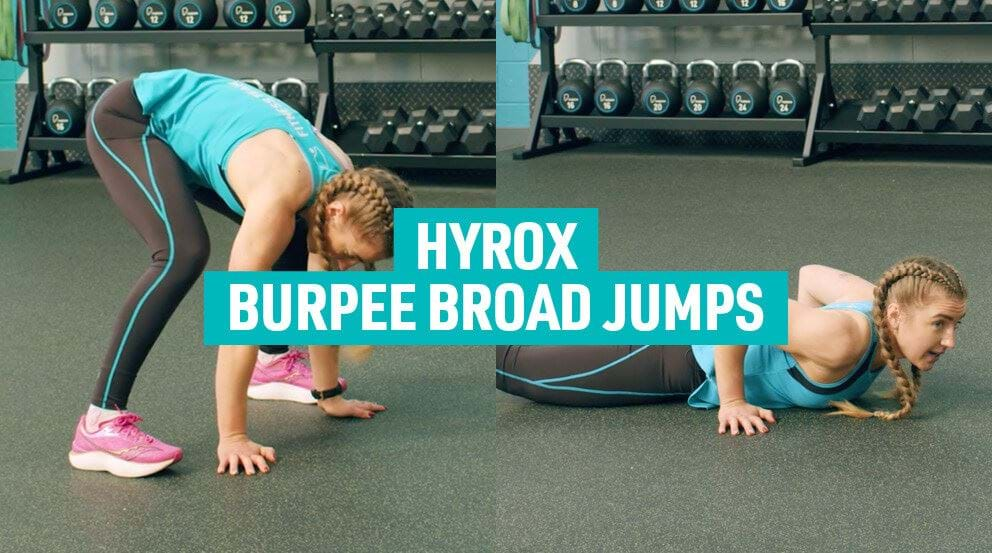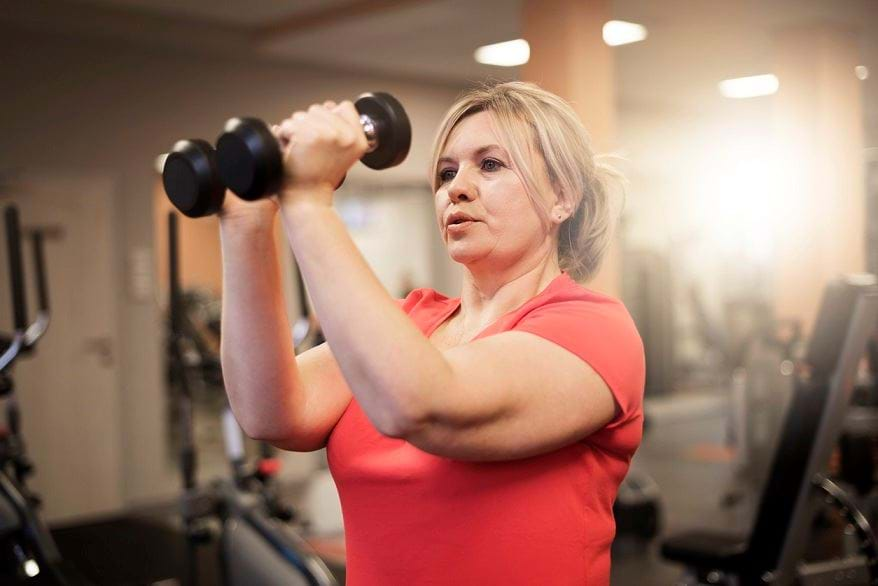The 7 Best Exercises to Help Improve Your Heart Health

How Exercise Improves Heart Health | Best Exercises For Heart Health | Breathing Techniques | Diet Vs Exercise | FAQs
Even though our hearts are responsible for keeping us alive, most people don't think about their heart health until they, or someone they know, have a health scare or are diagnosed with a heart condition.
Looking after your heart health is essential for your overall health and wellbeing, and it's something that should be done throughout your entire life to reduce the risk of heart and circulatory diseases as you get older.
Whether you are young, old, healthy, or have some health issues, focusing on your cardio fitness is the best way to boost your heart health along with taking small steps to improve your diet, including adding foods like fruits, vegetables and lean meats.
In this blog, we look at the best exercises to improve your heart health no matter what age you are.
How Does Exercise Improve Heart Health?
Regular exercise can reduce your risk of heart and circulatory disease by 35%, making it an incredible tool for improving your heart health.
Regular movement can also help you sleep better, boost your mood, increase energy and it's a great way to meet new people and try fun activities.
Let's look at five ways exercise is important for your heart health:
1. Exercise strengthens the heart muscle: The heart is a muscle, and like all muscles, exercise makes the heart stronger. A strong heart is more efficient at pumping blood around the body and delivering oxygen and nutrients to your tissues and organs. It's also more capable of keeping up with daily demands, like walking up the stairs or running for the bus.
2. It helps manage your blood pressure and cholesterol: Regular exercise helps to maintain healthy blood pressure levels by strengthening the heart and blood vessels, making it easier for blood to flow without high pressure. Exercise also helps to raise 'good' cholesterol levels, improving your overall cholesterol profile.
3. It can also improve your mental health: Exercise releases endorphins, which can alleviate stress, anxiety, and depression, contributing to better mental well-being and indirectly supporting cardiovascular health.
4. Improves quality of sleep: Taking part in regular physical activity can help you fall asleep faster and enjoy deeper, more restorative sleep, which plays an important role in maintaining a healthy heart.
5. Lessen risk of developing diabetes: Regular exercise helps regulate blood sugar levels and improves insulin sensitivity. When your body can manage glucose more effectively, it significantly reduces the risk of developing type 2 diabetes, a condition that affects 90% of individuals with diabetes. Plus, maintaining a healthy weight through physical activity can further lower your diabetes risk, as excess body weight is a significant risk factor for the disease.
The Best Exercises To Improve Your Heart Health
Cardio exercise directly works and strengthens the aerobic system, including the heart, and is the best type of exercise to improve your heart health. There are plenty of cardio exercises you can do to keep your heart healthy, so there’s no need to force yourself to do something you don’t enjoy. The following exercises are a great place to start!
Brisk Walking
Brisk walking is an accessible, low impact exercise that gets your heart pumping without putting too much strain on your joints. Brisk walking helps improve circulation, reduce blood pressure, and maintain a healthy weight, all of which contribute to heart health. It's easy to fit into your daily routine, whether it's a 10 minute lunchtime walk or a long weekend ramble.
Swimming
Swimming is another low impact exercise that is gentle on the body and great for your overall physical health. While we don’t offer swimming facilities in our gyms, we’d recommend you head to your local leisure centre or lido for a few laps in the pool.
Swimming provides a full-body workout that strengthens your heart muscles, improves lung capacity, and enhances overall endurance. The buoyancy of water supports your body and helps reduce the risk of injury and makes it great for people of all ages and fitness levels.
Cycling
Cycling is easy on the joints and helps to strengthen the legs as well as improve cardio health. Regular cycling can help to lower blood pressure, improve blood sugar levels, and reduce the risk of cardiovascular diseases.
You can get these benefits from indoor cycling and cycling outdoors. From cycling classes, commuting, and exploring the great ideas, there are plenty of ways to incorporate cycling into your week. Take a look at some of our cycling exercises to be inspired.
Running
Running is a popular way to keep fit, and for good reason! It's a low-cost cardio exercise that can be done anywhere, and can be tailored for all fitness levels. Benefits include reduced risk of heart disease, improved heart function and cholesterol levels, and increased cardiovascular endurance.
Start off light if you're new to running and work your way up to a challenge if you like - maybe a park run or a 5k!
Aerobic Dance Classes
Dancing is a high-energy workout that boosts cardiovascular fitness, coordination, and flexibility, and dance classes can be a great way to keep active and improve your heart health if traditional workouts are not your thing.
From Zumba to ballroom dancing, dance classes are widely available in community centres and gyms, and can be great fun with a friend or by yourself.
HIIT (High Intensity Interval Training)
Stepping it up a notch, HIIT exercises are bursts of intense exercises with short rest periods. They typically last between 5-20 minutes and are great for improving cardiovascular fitness. HIIT can be done anywhere, whether at home, in a gym, or in the park, making it highly versatile.
This type of training boosts your metabolism, improves heart rate variability, and increases aerobic and anaerobic fitness. It's particularly effective for those with a busy schedule who need to maximise workout efficiency.
Rowing
While it may not be as popular as some of the other exercises on this list, rowing is a challenging yet rewarding exercise that engages multiple muscle groups and provides a great cardio workout. Many gyms are equipped with rowing machines, or, if you really fancy, you can take it to the water at your local rowing club.
Rowing strengthens your heart and lungs, enhances muscular endurance, and can burn a significant number of calories. It's also a low-impact exercise, meaning there’s less chance of you becoming injured during exercise.
Mixing these exercises into your routine can help keep your heart healthy and strong while adding variety and enjoyment to your workouts. Remember to speak with a healthcare professional before starting any new exercise routine, especially if you’re living with existing health concerns
Breathing Exercises To Help Improve Your Heart Health
Breathing exercises can play a significant role in improving your heart health by reducing stress, lowering blood pressure, and enhancing your overall cardio function. They can also improve lung function and increase oxygen levels, meaning your heart doesn't need to work as hard to improve oxygen flow.
We have a guide on how to help you de-stress and unwind, but if you're specifically looking for breathing exercises, try the following:
Diaphragmatic Breathing
Also known as deep breathing or belly breathing, this technique involves breathing deeply into your diaphragm rather than shallowly into your chest. Sit or lie down in a comfortable position, place one hand on your chest and the other on your abdomen. Inhale deeply through your nose so that your abdomen rises more than your chest.
Exhale slowly through your mouth. Practise this for 5-10 minutes daily to reduce stress and improve oxygen flow to your heart.
4-7-8 Breathing
This relaxing breathing pattern can help lower heart rate and blood pressure. Sit or lie down comfortably and place the tip of your tongue against the ridge of tissue behind your upper front teeth.
Inhale quietly through your nose for a count of 4, hold your breath for a count of 7, and exhale completely through your mouth for a count of 8. Repeat this cycle four times. This technique can be particularly useful before bedtime to promote relaxation and better sleep.
Box Breathing
Also known as square breathing, this technique helps to calm the mind and regulate the autonomic nervous system, which controls heart rate. Sit comfortably with your back straight. Inhale through your nose for a count of 4, hold your breath for a count of 4, exhale through your mouth for a count of 4, and hold your breath again for a count of 4. As you breathe, picture yourself drawing the lines of a box.
Repeat this pattern for several minutes. Box breathing can be practised anytime you need to de-stress and focus.
Alternate Nostril Breathing
Alternate nostril breathing (Nadi Shodhana) is a yogic breathing technique that helps balance the body and mind, reducing stress and improving heart function.
Sit comfortably with your spine straight and shoulders relaxed. Close your right nostril with your right thumb, and inhale deeply through your left nostril. Close your left nostril with your ring finger, open your right nostril, and exhale fully. Inhale through your right nostril, close it with your thumb, open your left nostril, and exhale fully. This completes one cycle. Perform 5-10 cycles daily for optimal benefits.
Is Diet Or Exercise More Important For Heart Health?
When it comes to heart health, both diet and exercise are essential and work wonderfully together.
A nutrient-rich diet is a great start. Eating a mix of fruits, vegetables, whole grains, lean proteins, and healthy fats gives your body the vitamins, minerals, fibre, and antioxidants it needs. Healthy fats from avocados, olive oil, and fatty fish can also help improve cholesterol levels and reduce the risk of heart disease.
Be sure to watch your intake of sodium and added sugars to keep your blood pressure in check, too. Take a look at our article on nutrition and diet advice if you'd like to know more about maintaining a healthy diet.
Exercise is equally important, as regular physical activity helps strengthen your heart, improve circulation, and boost your overall fitness. As we mentioned earlier, activities like walking, running, swimming, and cycling are excellent choices to keep a healthy heart.
Plus, exercise is a fantastic stress buster, promoting the release of endorphins and helping to reduce stress-related heart issues.
The best part is that diet and exercise complement each other perfectly. A balanced diet fuels your body for great workouts, and regular exercise helps your body make the most of the nutrients from your food.
So, instead of choosing one over the other, try to include both in your daily routine for the best heart health - speak to one of our coaches if you'd like a structured diet and exercise plan.
FAQs
The NHS recommends that we all aim to do strengthening activities that work all major muscle groups on at least 2 days per week, as well as 150 minutes of moderate-intensity aerobic activity or 75 minutes of vigorous-intensity aerobic activity per week.
But any movement is a great place to start. Small steps add up to big changes.
Physical activity doesn’t have to be running a marathon or spending every day in the gym. It can be any type of movement that increases your heart rate, makes you feel warmer and breathe harder.
Heart and circulatory diseases (also known as cardiovascular diseases) often start with a build-up of fatty substances in your arteries (the blood vessels that carry blood to your organs). This causes damage and potential blockages, which strain your heart.
It’s estimated that over half of us will get a heart or circulatory condition in our lifetime, with many of those being preventable through simple lifestyle changes such as increasing your physical activity and eating better.
Interested in finding out more about heart health? Check out our blog on how to look after your heart and read our simple swaps and manageable steps you can take to reduce your risk of heart and circulatory disease.
Want to know more about how your heart works? We've got you covered too. Check out our blog on how your heart works and learn the basics about your heart's anatomy and how it keeps you alive.
You can also find out more about our partnership with the British Heart Foundation if you'd like to learn how we're helping make a difference to the health of our nation.
Want to jump straight in? Find your nearest PureGym today to kickstart your health journey.


